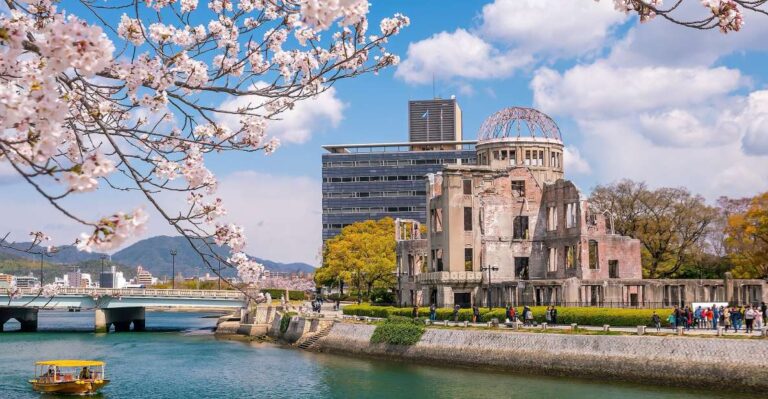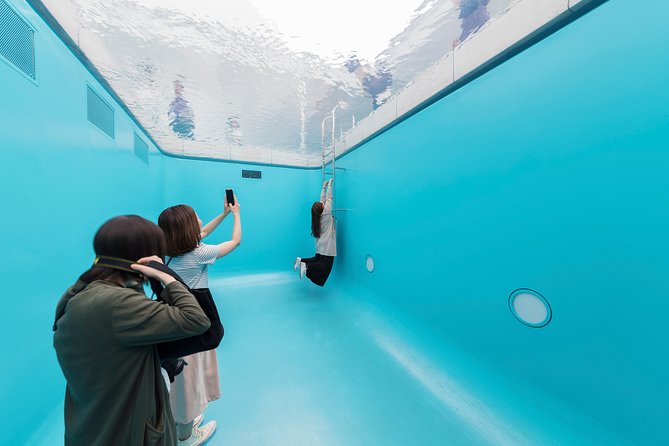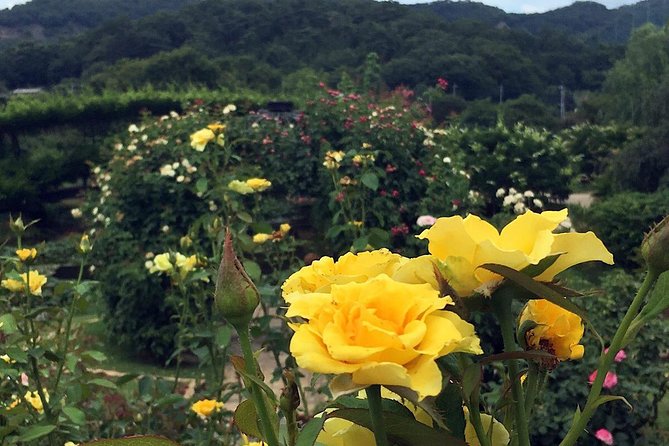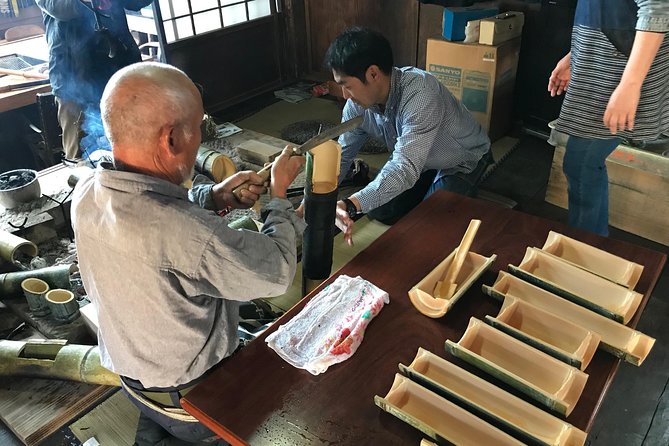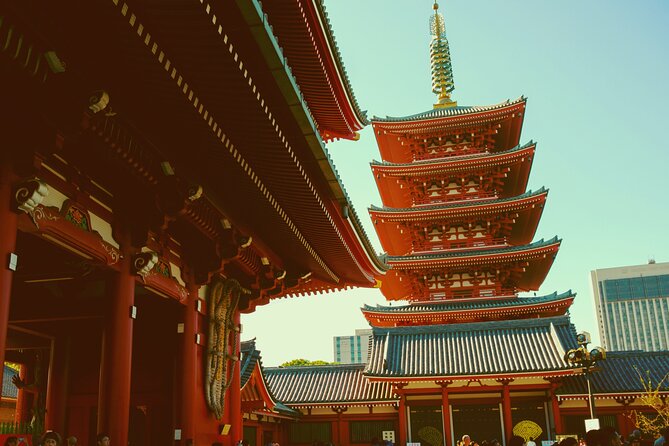When it comes to Japanese style coffee brewing, the saying ‘practice makes perfect’ rings true. Have you ever wondered what sets Japanese coffee apart and how you can replicate that at home?
The meticulous attention to detail, from water temperature to pour-over technique, plays a crucial role in crafting a truly exceptional cup of coffee. Stay tuned to uncover the secrets behind Japanese coffee brewing that will take your coffee game to a whole new level.
Key Takeaways
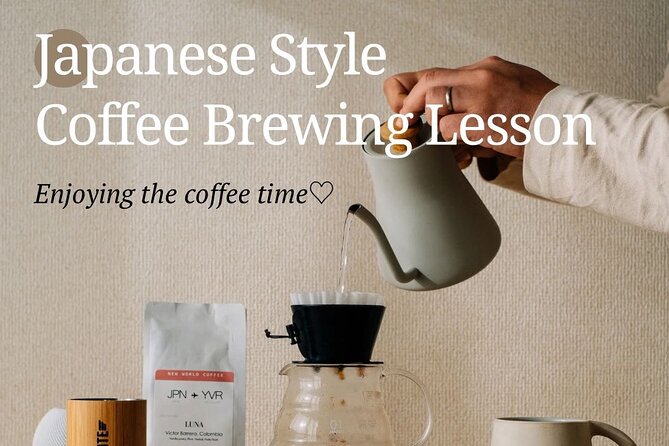
- Embrace tradition and innovation for a unique coffee experience.
- Prioritize quality beans, water temperature, and extraction time.
- Equip yourself with essential tools for precise brewing techniques.
- Master the art of pouring, grinding, and brewing time for exceptional flavors.
History of Japanese Coffee Brewing
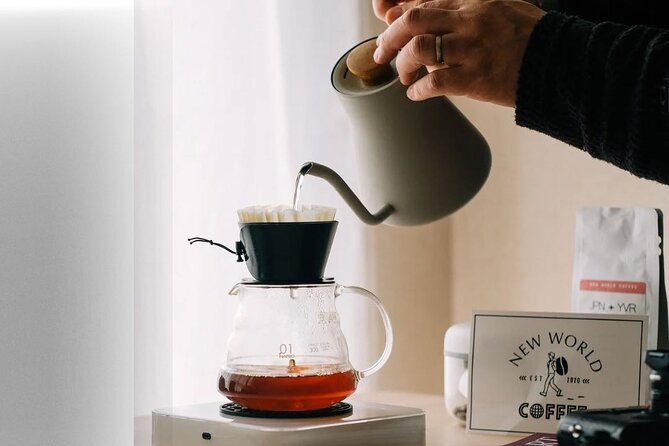
Japanese coffee brewing has a rich history that blends tradition with innovation, creating unique and flavorful coffee experiences. In Japanese coffee culture, brewing traditions date back to the early 1600s when coffee was first introduced to the country by Dutch traders.
Over the years, Japan has developed its own unique approach to coffee brewing, focusing on precision and attention to detail. Japanese brewing methods such as pour-over, siphon, and cold brew have gained popularity worldwide for the clean and delicate flavors they produce.
These methods emphasize quality beans, water temperature, and extraction time to achieve a balanced and aromatic cup of coffee that reflects the meticulous nature of Japanese craftsmanship in every sip.
Equipment Needed for Brewing
To brew Japanese-style coffee, you’ll need specific equipment that enhances the brewing process and ensures a quality cup of coffee. Brewing essentials for this method include a pour-over kettle, a dripper like the Hario V60, a digital scale for precise measurements, and quality coffee filters.
These brewing tools are crucial for achieving the unique flavors and aromas characteristic of Japanese coffee. The pour-over kettle allows for controlled pouring, while the dripper facilitates even extraction of coffee grounds. Using a digital scale ensures accuracy in coffee-to-water ratios, resulting in a consistently delicious brew. Quality coffee filters help remove any impurities, guaranteeing a clean and flavorful cup of Japanese-style coffee.
Selection of Coffee Beans
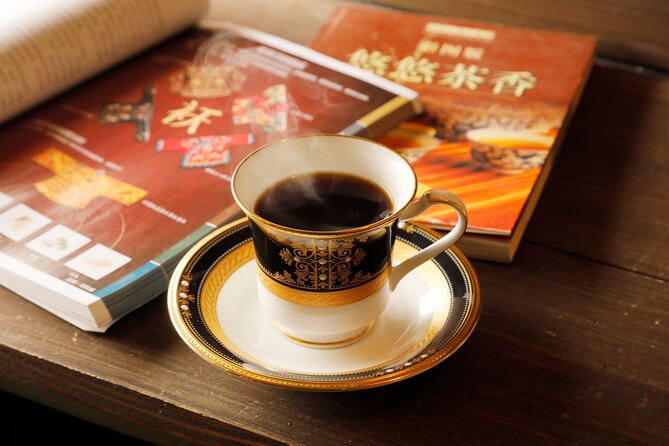
When selecting coffee beans for Japanese-style brewing, consider the roast level to match your flavor preferences. It’s essential to choose beans that complement the brewing techniques you’ll be using. Here are some key points to keep in mind:
- Bean origins: Explore beans from different regions to experience diverse flavor profiles.
- Brewing techniques: Select beans that suit the specific brewing method you plan to use.
- Coffee bean roasting techniques: Opt for light to medium roasts for a more delicate flavor, or go for dark roasts for a bolder taste.
- Quality over quantity: Invest in high-quality beans for a more satisfying cup of coffee.
- Experimentation is key: Don’t be afraid to try different beans to find your perfect match.
Grinding and Measurement Techniques
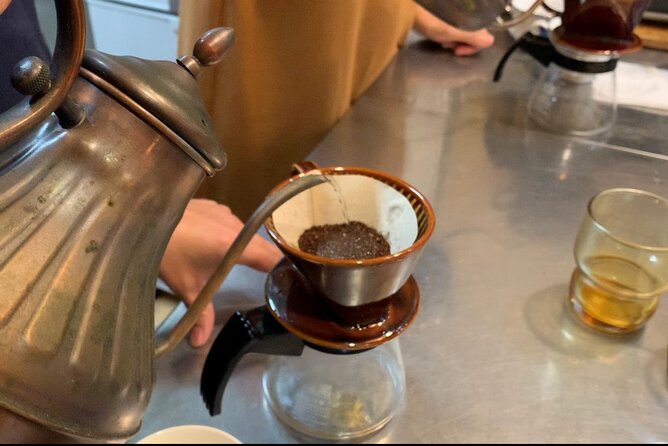
In preparing coffee beans for Japanese-style brewing, the grinding and measurement techniques play a significant role in achieving the desired flavor profile. When it comes to grinding, consistency is key. The beans should be ground to a medium-coarse consistency to ensure the optimal extraction of flavors during the brewing process. Using a burr grinder is recommended for a uniform grind size.
When it comes to measurement, precision is crucial. The right coffee-to-water ratio is essential for a balanced and flavorful cup. Typically, a 1:15 coffee-to-water ratio is ideal for Japanese-style brewing. These brewing essentials are fundamental in the brewing process, as they directly impact the taste and quality of the final coffee product.
Water Temperature and Pouring Method
How crucial is maintaining the right water temperature and pouring method in Japanese-style coffee brewing for achieving the perfect cup?
When it comes to Japanese-style coffee brewing, attention to detail in water temperature and pouring technique can make a significant difference in the final taste of your coffee. Here are some key points to consider:
-
Brewing tools: Using the right equipment such as a pour-over kettle and a thermometer can help you control the water temperature accurately.
-
Coffee culture: Understanding the importance of precision in Japanese coffee brewing methods can deepen your appreciation for the craft.
-
Consistent pouring: Maintaining a steady and controlled pour over the coffee grounds ensures even extraction.
-
Water temperature: Optimal water temperature, typically around 195-205°F, is crucial for extracting the flavors effectively.
-
Circular pouring motion: Employing a circular pouring motion can help saturate the coffee grounds evenly, promoting balanced extraction.
Brewing Time and Techniques
To achieve a delicious cup of Japanese-style coffee, mastering the brewing time and techniques is essential. The brewing time plays a critical role in extracting the desired flavor profiles and enhancing the sensory experience of the coffee.
Japanese coffee brewing often focuses on precision and attention to detail, ensuring that each cup is a masterpiece of taste and aroma. Brewing trends in Japan have seen innovative techniques emerge, such as the meticulous pour-over method and siphon brewing, which elevate the coffee experience to new heights.
Serving and Presentation Tips
Moving from perfecting the brewing process, let’s now explore some tips on serving and presenting Japanese-style coffee. When it comes to serving this delightful beverage, there are certain etiquettes and aesthetics rooted in Japanese culture and hospitality that can elevate the experience.
Here are some tips to consider:
- Use traditional Japanese serveware: Opt for elegant, minimalist teacups and pots to enhance the authenticity of the experience.
- Focus on presentation: Pay attention to details like pouring the coffee with precision and serving it gracefully.
- Offer a small sweet treat: In Japanese culture, a small confection served alongside coffee symbolizes hospitality.
- Maintain a serene atmosphere: Create a peaceful ambiance for your guests to enjoy their coffee.
- Express gratitude: Show appreciation to your guests for sharing this moment with you.
Popular Japanese Coffee Variations
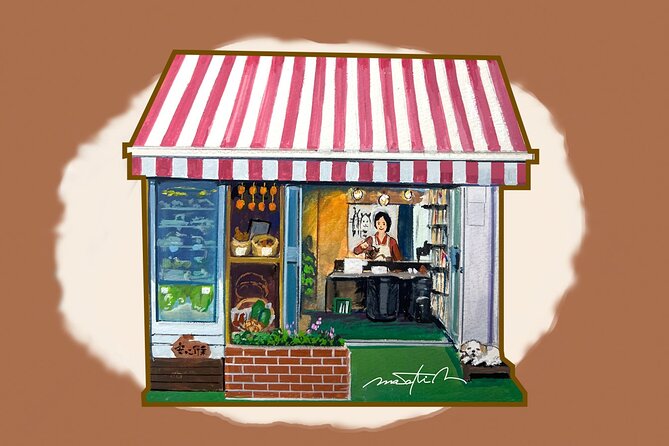
Among the popular Japanese coffee variations, one must try the rich and aromatic Kyoto-style cold brew. Japanese coffee culture values precision and elegance in brewing methods, leading to unique and delightful innovations. Here’s a breakdown of some popular Japanese coffee variations:
| Coffee Variation | Description | Key Features |
|---|---|---|
| Kyoto-style Cold Brew | Slow-dripped over ice for 12-24 hours, resulting in a smooth, concentrated flavor. | Low acidity, bold taste, aromatic. |
| Shakerato | Espresso shaken with ice and simple syrup, creating a frothy, refreshing drink. | Strong espresso kick, sweet undertones. |
| Sakura Latte | Espresso mixed with cherry blossom syrup and steamed milk, capturing a floral essence. | Delicate cherry blossom flavor, creamy texture. |
| Matcha Affogato | Matcha green tea poured over vanilla ice cream, blending bitter and sweet flavors. | Balanced bitterness, creamy sweetness. |
| Hojicha Latte | Roasted green tea steeped in milk, offering a nutty, earthy profile with a hint of sweetness. | Smoky aroma, comforting taste. |
Frequently Asked Questions
Can I Bring My Own Coffee Beans to the Japanese Style Coffee Brewing Lesson?
Yes, participants can bring their preferred coffee bean varieties to the lesson. This option allows attendees to experience different brewing techniques using their favorite beans, enhancing the personalized learning experience.
Are There Any Age Restrictions for Participating in the Brewing Lesson?
Age restrictions may apply for participation. Parental supervision might be necessary based on the activity. It’s always best to check with the specific event or service provider for detailed information on age requirements.
Is the Brewing Lesson Suitable for Beginners With No Prior Coffee Brewing Experience?
Yes, the brewing lesson is perfect for beginners. Participants will learn with step-by-step guidance, hands-on practice, and enjoy a tasting session. No prior experience needed. All equipment is provided for an immersive learning experience.
Are There Any Additional Costs Involved in the Brewing Lesson Apart From the Initial Price?
When considering additional costs beyond the initial price, it’s essential to inquire about any potential extra charges for materials or hidden fees. This ensures transparency and prevents surprises, making the experience smoother for all participants.
Can I Purchase Coffee Brewing Equipment at the Venue After the Lesson?
When visiting the venue after the lesson, customers can explore equipment selection for brewing techniques. Additionally, they may discover various coffee bean origins and flavor profiles available for purchase, enhancing their brewing experience.
Conclusion
In conclusion, mastering the art of Japanese style coffee brewing is a rewarding journey filled with precision and tradition.
By understanding the history, equipment needed, coffee bean selection, grinding techniques, water temperature, pouring method, brewing time, and serving tips, you can elevate your coffee experience to new heights.
With dedication and practice, you can enjoy the rich and aromatic flavors of Japanese coffee culture in every sip.
Cheers to brewing the perfect cup of coffee, Japanese style!

